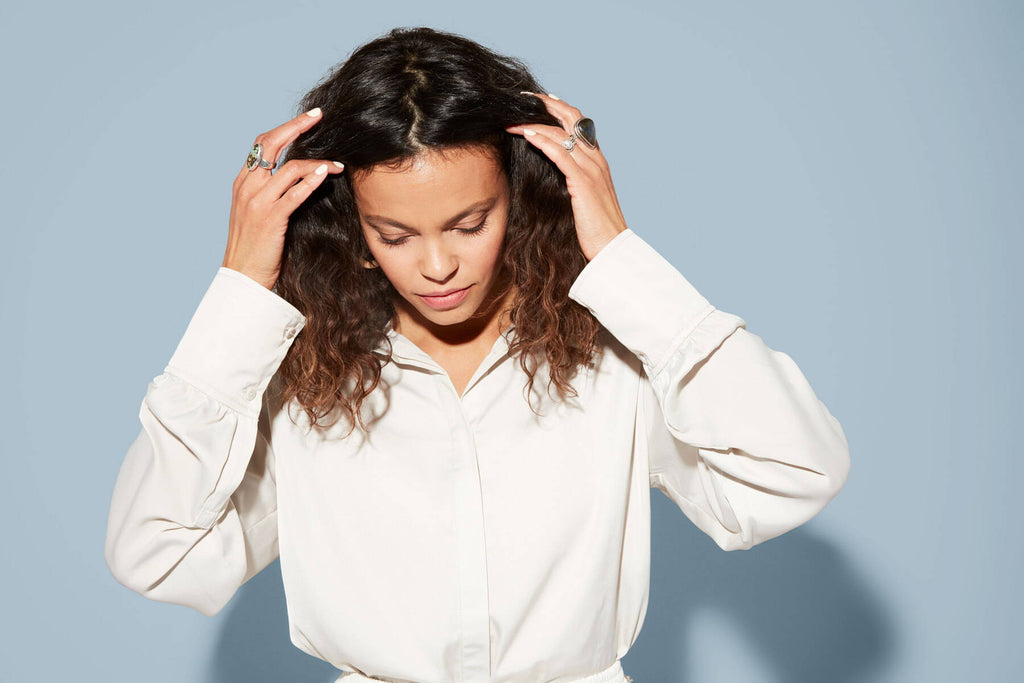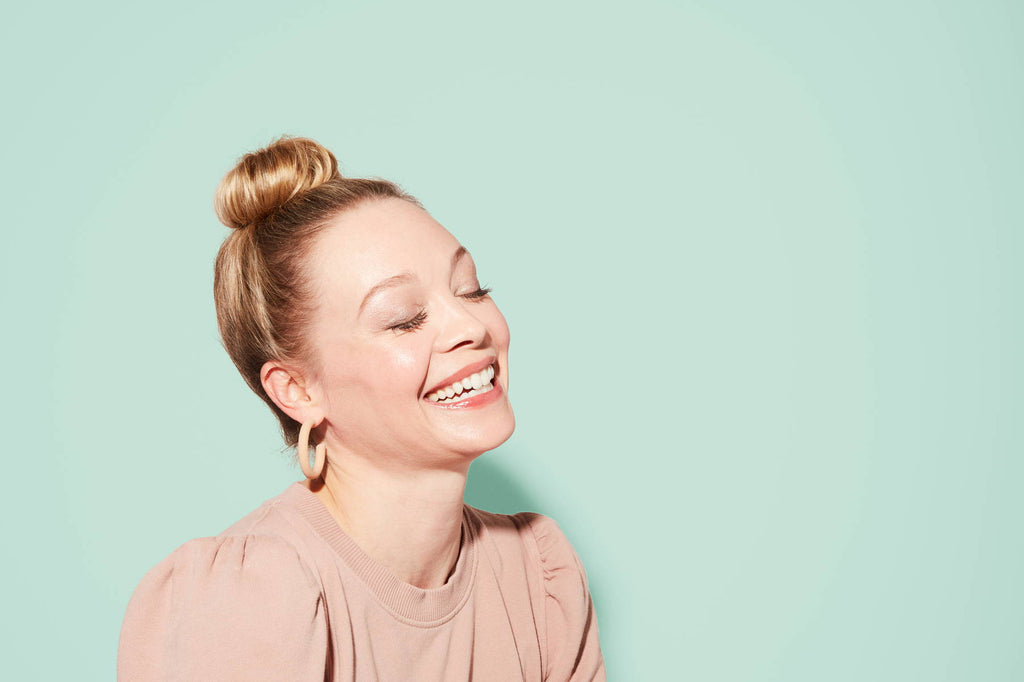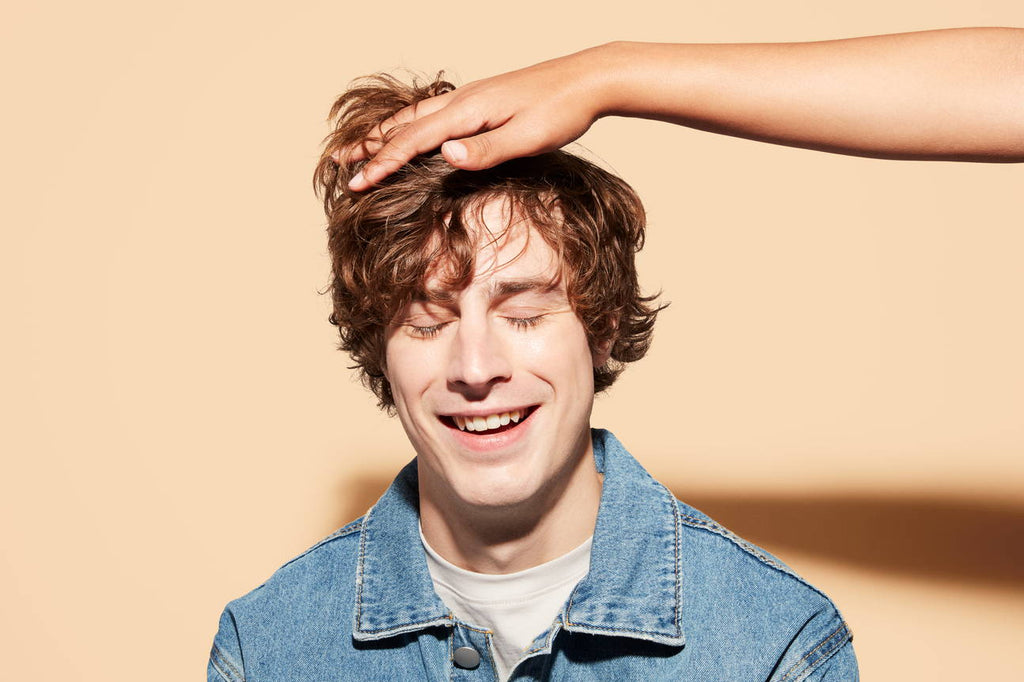Hair loss happens. In fact, most of us will experience it at some point in our lives, whether temporary or permanent. On the bright side, there are steps you can take to keep more of that beautiful hair on your head—starting with finding the right care regimen. Plus, understanding how hair growth works will give you a better idea of what’s considered normal hair loss and what could be a sign that something’s off—setting you up for healthier hair days ahead.
Understanding the hair growth cycle
Each of the 100,000 hairs on our head is in a different stage of its two- to seven-year lifespan (yup, there’s a whole “circle of life” going on up there). When you think about that, it makes sense that we lose a few each day.
A hair’s life cycle is split into four phases:
Growing phase (anagen): This phase lasts several years and covers the time when your hair is actively growing. Most of your hair (90 percent!) is in this phase at any given time.
Transition phase (catagen): During this two-week phase, the hair’s growth slows to a stop and it starts to separate from the follicle.
Resting phase (telogen): At this point, the hair’s basically at rest—not growing, but not falling out, either. This part usually lasts about three months.
Shedding phase (exogen): This is when the hair sheds from the scalp (usually with the help of your brush). A new hair also starts to grow in the follicle as the old hair sheds away—and the cycle repeats itself.
Everyone is different, so your cycle might be shorter or longer depending on your age, genetics and overall health. That means staying healthy and taking good care of your hair can help keep the cycle flowing smoothly. It also means that when something disrupts the cycle, it can stop or slow growth—and that’s when hair loss occurs.
Hair shedding—what’s normal, and what’s not?
Medically speaking, hair loss and shedding are actually two different things. Hair shedding happens when your hair falls out, but hair loss happens when something prevents your hair from growing in the first place.
How much hair shedding is normal? According to the American Academy of Dermatology, it’s normal to shed around 50 to 100 hairs a day. (No need to count—here's a handy visual.) That said, nutrition, stress, hormones, hygiene, styling habits and even genetics can affect how much you shed.
The hormonal changes that happen in a woman’s body during pregnancy, for instance, can disrupt the normal hair growth cycle, which is why postpartum hair loss is so common. Similarly, going through a stressful event (like, the entire last year?) can push hairs from the growing phase into the resting phase, causing them to fall out earlier than they would normally. Not getting enough protein in your diet can also throw things off.
If you’re shedding way more than 100 hairs daily, you could be experiencing excessive shedding (medically known as telogen effluvium). Excessive shedding that’s caused by a temporary situation (like pregnancy or a high fever) tends to right itself with time, but if the stress is long-term, it could mean long-term shedding, too. Keep in mind, though, that if you only brush or wash your hair once or twice a week, you’ll be seeing several days worth of shed hair in your comb or drain.

What causes hair loss?
So, what causes hair loss? Most of the time, it’s genetics (male or female pattern baldness), but it can also result from the many of the same things that cause excessive shedding. The usual suspects are:
- genetics (both sides of your gene pool play a part)
- hormonal changes (pregnancy, childbirth, menopause, hormone medications)
- medical conditions (autoimmune disorders like alopecia, illness, scalp issues)
- stress (physical and psychological—high fever, significant weight loss, physical or emotional trauma)
- harsh hair treatments (chemical relaxers, bleach, dyes)
If you’re concerned about how much hair you’re losing or notice a sudden change, talk to your doc! They can help you figure out what’s behind it and explore possible treatments. Hair loss is sometimes connected to other health issues, so it’s a good idea to rule out any potential underlying problems.
And if you’ve lost the fight with your follicles, don’t be afraid to embrace what you’ve got. Every head is beautiful, even bald!
Can shampoo cause hair loss?
We investigated and consulted our lead chemist—and it’s unlikely. If you experience a bad allergic reaction to a hair product, it could cause irritation that leads to hair loss, but it’s pretty rare. Hair loss is more often influenced by internal factors (hormones, nutrition, stress, genetics) rather than external factors like shampoo.
In fact, not using shampoo is more likely to lead to hair loss. Some people prefer to use no-poo or low-poo products in lieu of shampoo (and if they work for you, great!), but those cleansers may be too mild for others. A clean scalp is essential for healthy hair growth, and it enhances the absorption of all the important nutrients in your hair products. If your scalp isn’t getting a proper clean, you’re leaving product buildup, dead skin cells and all kinds of other junk up there, and basically creating a breeding ground for yeast and bacteria (yeah, yuck). Over time, it could lead to scalp inflammation and, yes, even hair loss. At the very least, you won’t be achieving your full growth potential.
Bottom line: It’s rare for a product to cause hair loss when used properly, but not impossible. If a hair product irritates your scalp, stop using it and consult your dermatologist. You can also reach out to the product company—they may be able to suggest a more suitable product for your hair type or help you figure out what went wrong.

Is there anything I can do to prevent hair loss?
To lower your risk of hair loss and prevent unnecessary shedding, be good to your hair, body and mind. Here are some simple ways to do it:
Get to know your hair. The more you understand its limits and how it behaves, the better you can avoid doing things it won’t like (like washing it too often… or cutting your own bangs).
Use the right products for your hair type. We can’t stress this one enough. You’ll notice the difference.
Be kind to your body and mind. Stay hydrated, eat a balanced diet and take steps to manage stress—all of it matters when it comes to your mane and beyond.
Keep that scalp clean. Buildup blocks the hair follicles—and for hair to grow healthy, they need to breathe! Detox your scalp once every week or so with a good clarifying shampoo (we made ours gentle enough that it won’t dry out your hair but will leave your scalp feeling brand new).
Be gentle. Your hair and scalp are delicate, so handle with care. Avoid abrasive hair ties (metal is a no-no) and tugging ponytails or buns. Don’t install braids, weaves or extensions too tightly. Try finger combing from time to time to give your hair a break from the brush.
Get ahead of hereditary hair loss. If you’re concerned about genetic hair loss, you can ask your doctor about preventative treatment options.











